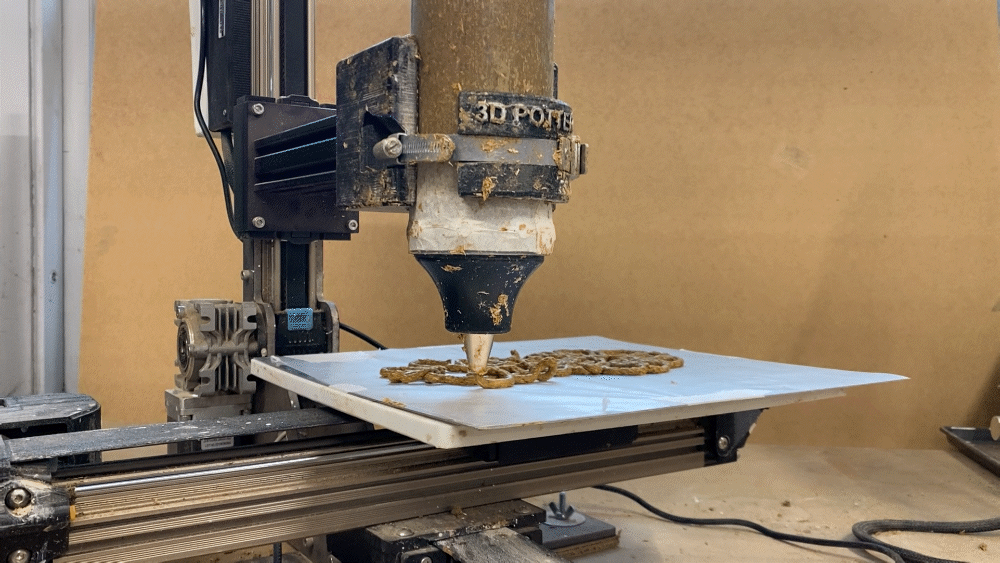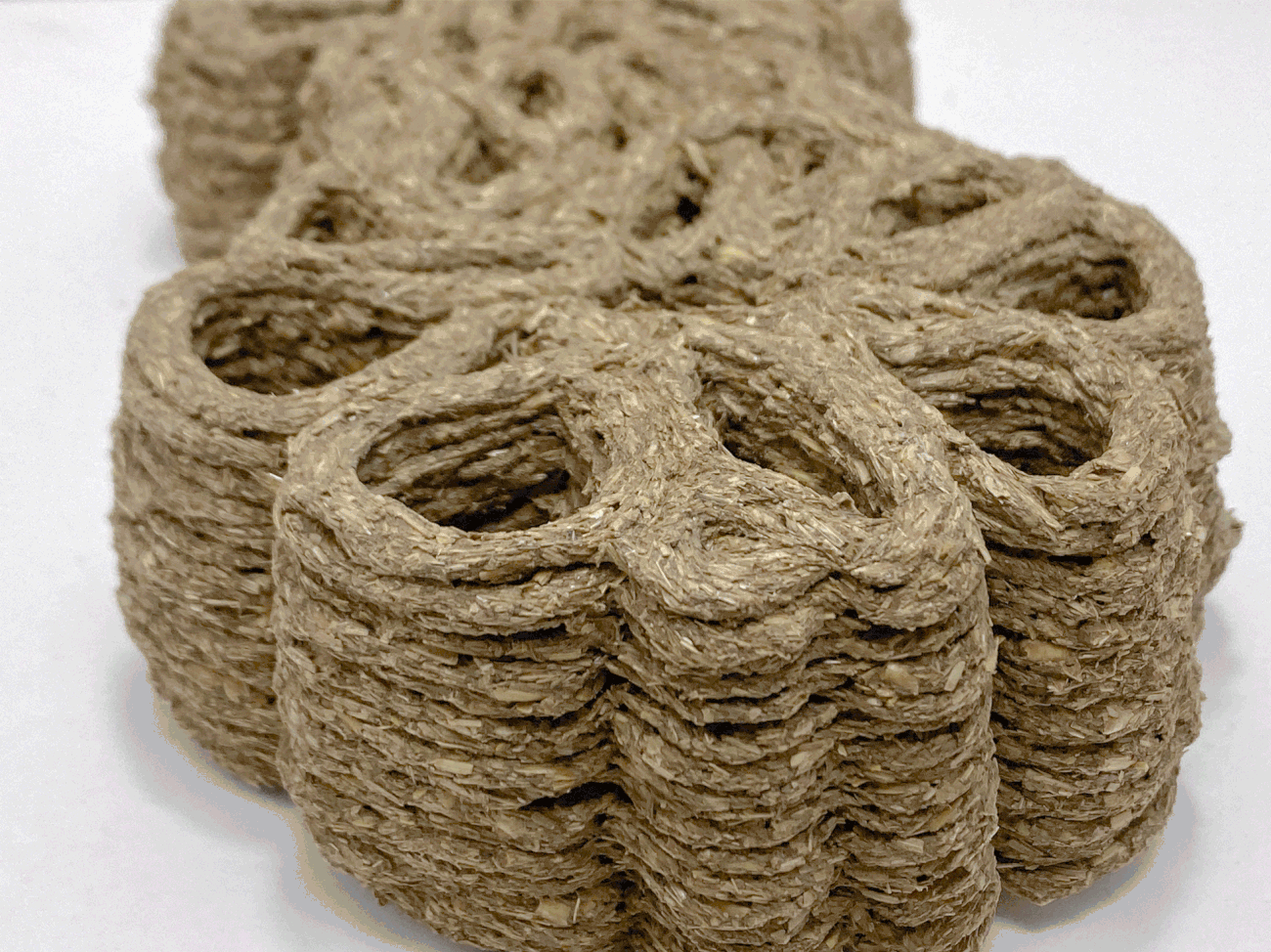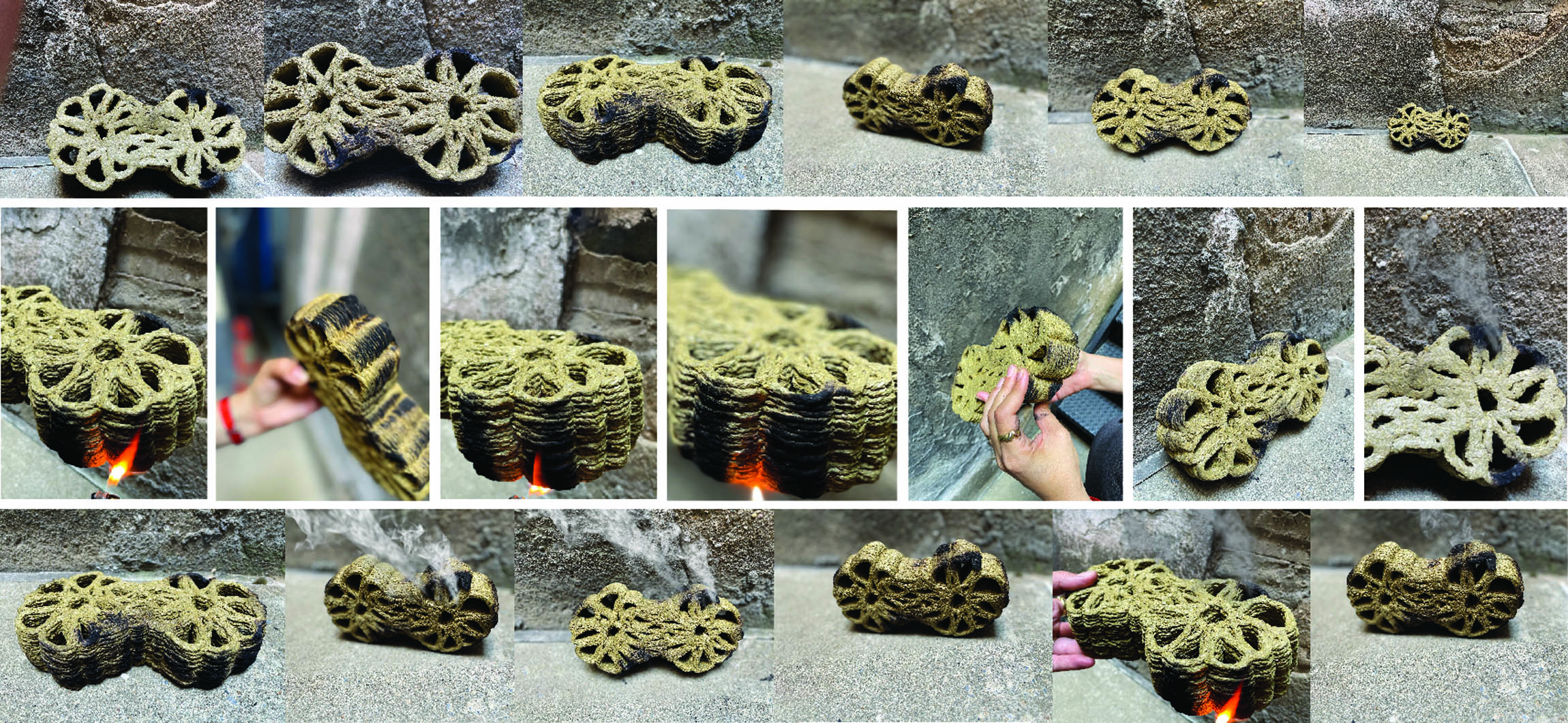Lola Ben-Alon of The Natural Materials Lab: Material Kitchens for Medicinal Bricks
One of six installations for the digital exhibition by winners of the 2024 League Prize.
The sensory experiences possible through bodily interaction with matter are increasingly important for deeper agency toward a more ecologically and socially just built environment. Through our minds alone, we might not fully grasp, for instance, the intensities of construction labor and the toxicities of chemical substances. Our bodies hold neurological knowledge, where sensory experiences are known today to contain a lot of “brain” within them—neurological space devoted to passing somatic information.
The Medicine Brick is an online installation and material design performance developed as part of the Architecture League’s Dirty-themed 2024 Prize. The project presents a ritual for brick-making using raw earth, plants, human hands, tools, and machines. It involves engagement in dirty-ness and the making of offerings through material and fire transformations.
As part of this work, natural clay soils and fibers are infused with medicinal resins, salts, and minerals to create 3D printable “concoctions.” Through the use of natural substances, the presented brick-making process aims to evoke experiences rooted in our embodied histories. From sourcing clay soils and plant fibers, which offers opportunities to trace the relationship between the site and source along supply lines, to the sensory engagement in the realization of the artifact through smell, touch, and movement. Creating the mix design is where the magic happens. From ancient figurines and brick-making, the brick is a symbol of life; the brick as birth.
Fluid dynamic simulations were conducted to predict wind flow through and around the brick. This airflow not only aids in cooling for bioclimatic purposes but also promotes healing through sacred geometry and materiality, invoking a flow of air for purification, just like smudging.
When natural clay is added to water, it hisses and bubbles as the air leaves its pores and water rushes in. The clay, therefore, is full of life and nutrition. It is animated. The fibers—wheat straw and prairie grass hay—provide reinforcement and porosity to the material composites, and sugars from trees and algae are added as stabilizers. Traditional mixtures of medicinal resins, salts, and minerals are shredded into the mixture to add color and scent. The composite creates a brick, and the brick is used as an altar. Within a ceremony, the brick signifies a place where sacrifices can be made. The design of the brick is inspired by circular geometries. It is burnt in a ceremonial act, like incense, to complete a cycle of renewal and degradation.








